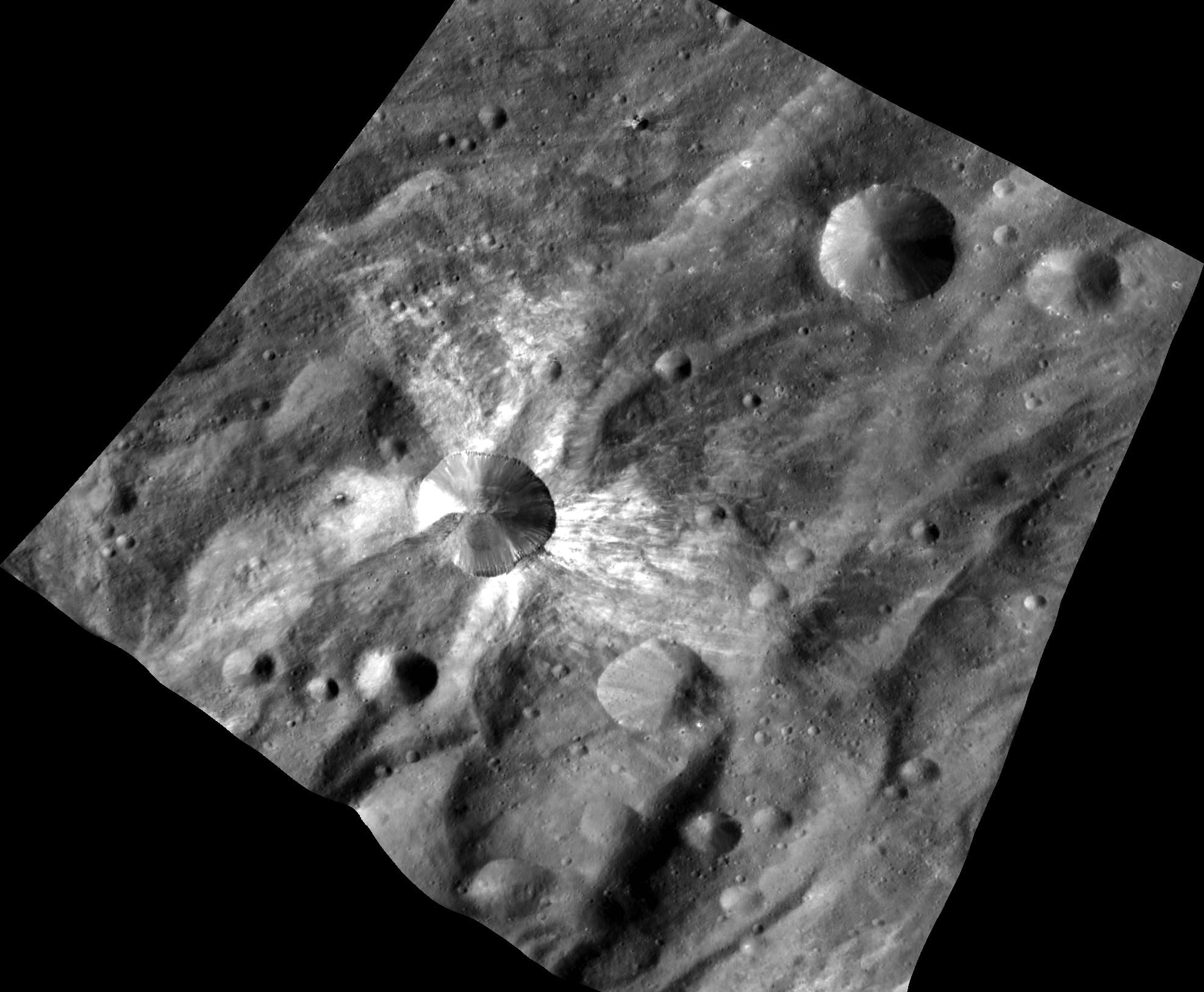
Space weathering is a fascinating phenomenon that occurs as a result of various processes and interactions in the harsh environment of outer space. It involves the alteration and degradation of astronomical objects, such as asteroids, comets, moons, and even planets, due to the constant bombardment of high-energy radiation, micrometeoroids, and solar wind particles. This unique process leads to the formation of remarkable surface features and transformations that have captured the attention of scientists and space enthusiasts alike.
In this article, we will delve into the intriguing world of space weathering and explore 20 unbelievable facts that shed light on this cosmic phenomenon. From the unexpected color changes on lunar surfaces to the mysterious darkening of asteroids, we will unravel the mysteries behind these transformations and their implications for our understanding of the universe. So, fasten your seatbelts and get ready for an exciting journey through the wonders of space weathering!
Key Takeaways:
- Space weathering is like a cosmic makeover that changes the appearance of celestial bodies, making them look weathered and worn out. It’s caused by things like solar radiation, tiny meteorite impacts, and even the wind from the Sun.
- Space weathering isn’t just a problem for rocks and asteroids; it can also mess with spacecraft and satellites. Scientists are working hard to understand this space makeover process so we can build better stuff for exploring space!
Space Weathering is the process of how celestial bodies are transformed by their exposure to the harsh conditions of space.
The extreme environment of space, including solar radiation, cosmic rays, micrometeorite impacts, and vacuum conditions, leads to the alteration of the physical and chemical properties of objects in space.
Space weathering affects various objects in our solar system, including the Moon, asteroids, comets, and even spacecraft.
These objects undergo significant changes over time due to the relentless bombardment of high-energy particles and the effects of the space environment.
One of the most prominent effects of space weathering is the darkening of the surfaces of celestial bodies.
This darkening occurs due to the accumulation of fine dust particles, known as regolith, and the creation of microscopic glass-like structures called agglutinates.
Micrometeorite impacts play a crucial role in space weathering.
These tiny meteoroids impact the surfaces of objects, causing shockwaves, melting, and vaporization of surface materials.
Solar wind, which consists of highly energized particles from the Sun, also contributes to space weathering.
These particles bombard the surfaces of celestial bodies, leading to chemical reactions and the alteration of mineral compositions.
The space weathering process can cause significant changes in the physical properties of objects, including surface roughness and the creation of tiny craters.
These alterations give celestial bodies a weathered appearance and can help scientists study the geological history of different objects.
Over time, space weathering can erode the sharp edges and features of rocks and boulders on the Moon and other rocky bodies in the solar system.
This process is known as “space rounding” and is attributed to the continuous bombardment by micrometeorites.
Space weathering can also lead to the formation of unique spectral features in the reflectance of celestial bodies.
These spectral features provide valuable information about their composition and mineralogy.
The color changes caused by space weathering can be observed on the surfaces of asteroids and are useful for determining their ages.
By studying the extent of space weathering on asteroids, scientists can estimate the time they have spent in space.
Spacecraft and satellites are also affected by space weathering.
The exposure to the harsh space environment can lead to the degradation of solar panels, thermal control systems, and other sensitive equipment.
Space weathering poses challenges to future space exploration and colonization.
Understanding the effects of space weathering on human-made structures is crucial for designing robust and long-lasting spacecraft and habitats.
Space weathering is a complex process that scientists are still actively researching.
By analyzing samples returned from space missions and conducting laboratory experiments, researchers aim to unravel the mysteries of this fascinating phenomenon.
The term “space weathering” was first used by Eugene Shoemaker, a renowned planetary scientist, in the late 1960s.
Shoemaker recognized the need to study the effects of space on the surfaces of celestial bodies.
The Lunar Reconnaissance Orbiter (LRO) has provided valuable data on space weathering processes on the Moon.
Images and measurements captured by LRO instruments have allowed scientists to study the Moon’s surface in unprecedented detail.
Space weathering can affect the visibility of celestial bodies.
The accumulation of regolith on the Moon’s surface, for example, contributes to the dimming of the reflected sunlight.
Space weathering on the Moon is responsible for the creation of delicate surface features called “lunar swirls.”
These bright, sinuous patterns are thought to be the result of interactions between the solar wind and the Moon’s magnetic field.
The study of space weathering can help us understand the evolution and geologic history of objects in our solar system.
By analyzing the physical and chemical changes caused by space weathering, scientists can unravel the past processes that have shaped these celestial bodies.
Space weathering can affect the thermal properties of objects, causing temperature variations on their surfaces.
This phenomenon has significant implications for the exploration of asteroids and other small bodies in space.
Some materials, such as highly porous rocks, are more susceptible to space weathering.
Their intricate structures can be easily modified by the space environment, leading to dramatic changes in their appearance and properties.
The study of space weathering has implications beyond our solar system.
Understanding how celestial bodies are weathered in space can provide insights into the processes occurring in other planetary systems throughout the universe.
Conclusion
Space weathering is a fascinating and complex phenomenon that affects celestial bodies in our universe. Through a combination of factors such as micrometeoroid impacts, solar wind interactions, and radiation exposure, the surfaces of these bodies undergo significant changes over time.
By studying space weathering, scientists gain valuable insights into the history and evolution of our solar system. It helps us understand the processes that shape the surfaces of planets, moons, and asteroids, and provides clues about the potential habitability of other celestial bodies.
As technology advances and our understanding deepens, we continue to uncover new and unbelievable facts about space weathering. From the creation of a thin “space dust” layer to the formation of unique surface features, these discoveries challenge our perceptions and expand our knowledge of the cosmos.
So the next time you gaze up at the stars, remember that even the vastness of space is not immune to the forces of weathering.
FAQs
Q: What is space weathering?
A: Space weathering refers to the physical and chemical changes that occur on the surfaces of celestial bodies due to various factors such as micrometeoroid impacts, solar wind interactions, and radiation exposure.
Q: Which celestial bodies are affected by space weathering?
A: Space weathering affects a wide range of celestial bodies, including planets, moons, asteroids, comets, and even the surfaces of spacecraft in space.
Q: How does space weathering occur?
A: Space weathering occurs through processes such as micrometeoroid impacts, which cause the disintegration and alteration of surface materials, and solar wind interactions, which induce chemical reactions on the surface. Radiation exposure also plays a role in altering the physical and chemical properties of the surface.
Q: What are some effects of space weathering?
A: Some effects of space weathering include the creation of a thin layer of “space dust” on the surface, the formation of regolith (loose fragmented material), the alteration of mineralogy and optical properties, and the development of surface features such as pits, craters, and rough textures.
Q: Why is studying space weathering important?
A: Studying space weathering helps scientists understand the geological history and evolution of celestial bodies. It provides insights into the processes that shape the surfaces of planets, moons, and asteroids, and aids in the search for habitable environments beyond Earth.
Space weathering's mysteries continue to captivate scientists and space enthusiasts alike. Unraveling its enigmatic effects on celestial bodies requires sophisticated prediction models and a deep understanding of its impact on satellites. Delving further into this fascinating topic, you'll find surprising facts about space weather prediction models, enigmatic details about space weather prediction itself, and the intriguing ways space weather affects satellites. Each article offers a unique perspective on this complex phenomenon, providing valuable insights into the ongoing research and discoveries in the field of space weathering.
Was this page helpful?
Our commitment to delivering trustworthy and engaging content is at the heart of what we do. Each fact on our site is contributed by real users like you, bringing a wealth of diverse insights and information. To ensure the highest standards of accuracy and reliability, our dedicated editors meticulously review each submission. This process guarantees that the facts we share are not only fascinating but also credible. Trust in our commitment to quality and authenticity as you explore and learn with us.


